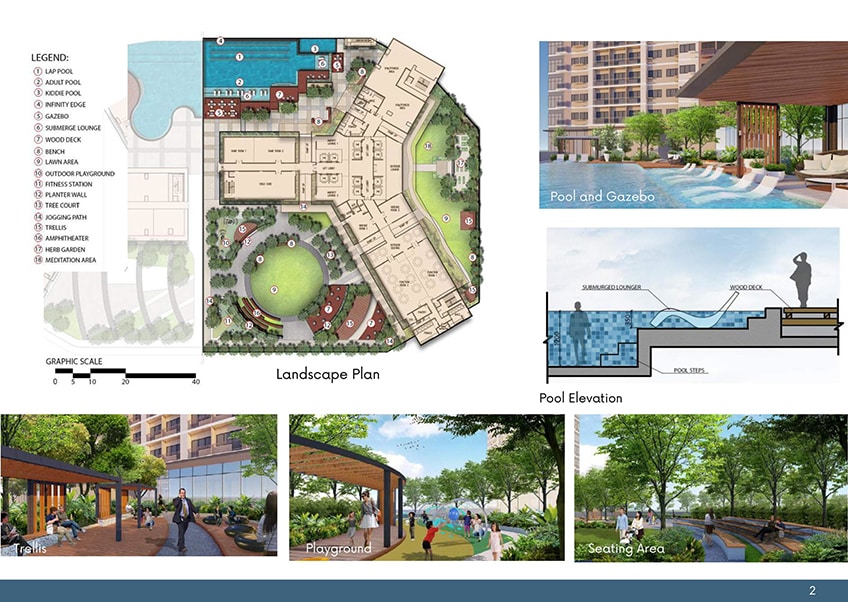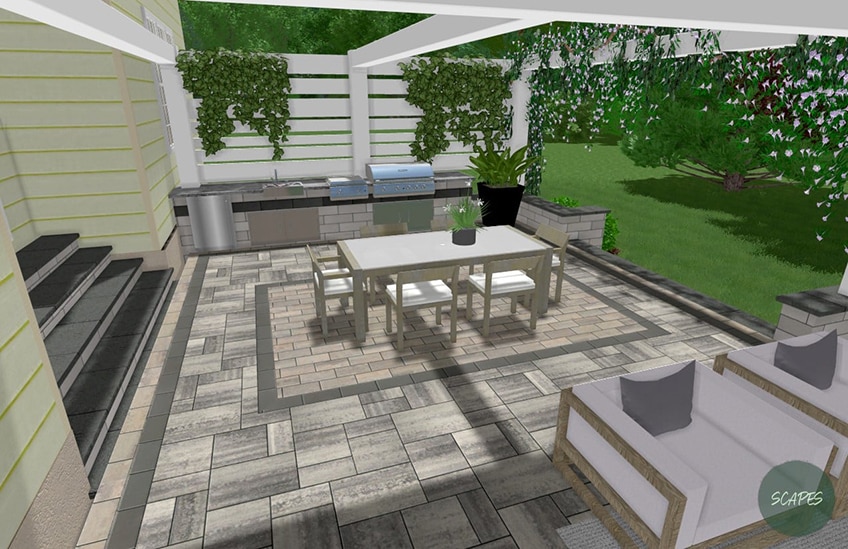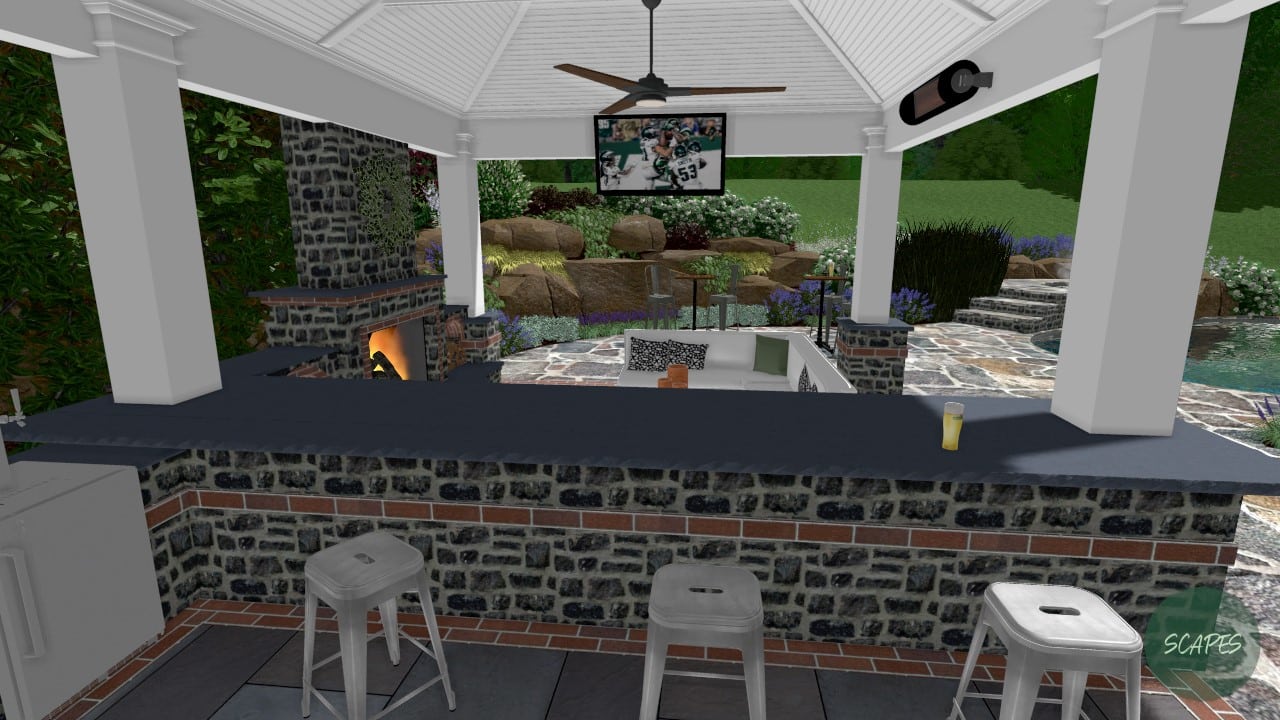In your search for your personal landscape vision creator, a question that will likely pop into your head at some point in the process will be
“What is the difference between a landscape architect and a landscape designer?”
Oftentimes, we see these words used interchangeably. This can be deceptive, though, so below we will break down the differences between landscape architects and landscape designers and what types of projects each is best suited for.
We touched on these distinctions briefly when outlining why it is a good idea to hire a landscape designer, but this article takes a deeper dive into the differences between the two.
By the end, you will have a firm understanding of when exactly you should hire a landscape designer, and when you may need the additional credentials of a landscape architect.
What does a landscape architect do?
If you have read our other blog article on “Why to Hire a Landscape Designer”, you have already seen some of this information. It is important, though, for the purpose of this article to provide as much information about both landscape architects and landscape designers as possible, so we have included it again.
Landscape architecture, as defined by Oxford Dictionary, is “the art and practice of designing the outdoor environment, especially designing parks or gardens together with buildings and roads.”
As such, landscape architects typically are not the best solution for a residential landscaping project. When compared to a landscape designer, architects will cost significantly more money for equivalent deliverables.
What projects are landscape architects best suited for?
The definition of what landscape architecture is adds some clarity and begins to illustrate the idea that landscaping architects are suited for larger scale projects than a residential home.
The American Society of Landscape Architects goes a step further and lists the types of projects that a licensed landscape architect usually works on:
1. Public Spaces
Public spaces are one of the trademark design categories of a landscape architect. Iconic places like New York City’s Central Park and the FDR Memorial in Washington, D.C. are profound examples of the work of a landscape architect.
Public gardens, arboretums, and streetscapes fit this category as well. In addition, tasks such as regional planning, development land planning, and suburban / urban design can be lumped into public space design.
2. Institutions
The exterior landscape and hardscape design of schools and college campuses fall in the realm of a landscape architect. Hospital and other facility sites are other examples that fit the institutions category that landscape architects are commonly involved in.

This image showing a design for a resort prepared by Tessa, one of SCAPES own landscape architects, is a good example of something an architect would typically work on.
3. Corporate and Commercial Grounds
This category is rather self-explanatory, essentially capturing all grounds where businesses operate out of. It can also include Interior landscapes.
4. Hospitality
You have probably picked up on the recurring theme by now that the types of projects landscape architects work on are larger in scope, and the hospitality sector are another group of projects landscaping architects handle. These can include hotels, resorts, and golf courses to name a few.
5. Historic Preservation
In addition to the above project types and categories, landscape architects can also be a great resource when renovating or preserving a historic site. Their resources and formal education background are likely the best set of skills available for a task such as this.
What credentials does a landscape architect possess?
Requirements to become a landscape architect may vary state-to-state, but usually include at least the following qualifications:
- A bachelor’s degree in landscape architecture from an accredited university
- Internship and/or on-the-job experience
- Passing the Landscape Architect Registration Examination
Licensed landscape architects generally possess very high levels of formal education and are well versed in the function and aesthetic objectives of landscape design. They do not, however, commonly possess much practical construction knowledge and this can sometimes result in plans that need to be altered to be able to be built.
Think of them as high-level visionaries, focused on crafting large spaces without always paying attention to the finer details of the elements within the space (and it is not always within the scope of their contracted work to focus on these details).
What does a landscape designer do?
By definition, landscape design “is the analysis, planning, and design of exterior living spaces” (APLDCA.org).
If we put our own spin on this definition, it might look something like “the analysis, planning, and design of exterior living spaces that harmoniously blend function and aesthetic in a manner that achieves the vision of the visionary.”
To be successful, landscape designs must first achieve any functional objectives (think a retaining wall to hold back a steep slope) and then attempt to integrate as much aesthetic appeal as possible.
Function is typically very black or white.
For example, if an outdoor living space is desired in a back yard for individuals to have a place to sit and entertain and a patio is designed large enough to accommodate the intended number of individuals, then function in the backyard design is achieved. Aesthetics, however, is much more subjective. That same patio can be constructed using a variety of materials (or combination of materials) and the aesthetic value will be impacted by the selection of such materials.
With the large number of available materials to build such a patio as referenced in the example and the aforementioned online photo platforms showing thousands of combinations of these materials, achieving a visually appealing design can be a challenging task for those who do not do so on a daily basis.
This is the true value of a landscape design professional – to help clarify an idea through visual representation of a design with high function and aesthetic characteristics.
Flexible, Affordable Landscape Designs

What projects are landscape designers best suited for?
The easiest distinction to define a separation between landscape designers and landscape architects is residential vs. commercial. As explored in the above question, landscaping architects are best suited for larger scale commercial type projects. Landscape designers help fill the void left in the residential landscape design space.
For the purposes of this article, we will keep the categories that landscape designers are best suited for to two main classifications (for a deeper dive into each of these categories, check out our other articles):

When compared to the previous photo of the resort plan created by a landscape architect, this 3D landscape image of an outdoor kitchen is more typical of what a landscape designer would work on.
1. Backyard Designs
This is a very vague category and could have many subcategories within it, but you probably get the gist of what we mean when we refer to a back yard oasis. This could be as simple as patio ideas for small backyards, or as complex as a master plan with a swimming pool design, multiple patio entertaining spaces, and overhead structures in the form of pergolas and pavilions. If you are in need of a backyard makeover, a landscape designer will be the best person to help you realize that vision.
2. Front Yard Designs
Front yard landscape design is another area of expertise for landscape designers. Whether it is a front yard landscape renovation to include ripping out existing plants and hardscapes to start with a fresh planting design, or you have a new home with a blank slate, landscape designers can help add curb appeal and function to your front yard landscape.
What does a landscape designer NOT do?
There are some limitations to a working relationship with a landscape designer. The deliverables prepared by a landscape designer are commonly referred to as “conceptual renderings”. This means that they are created with the intent of serving as a visual aid to represent a proposed solution.
For larger scale projects where permitting is required, a civil engineer or landscape architect may have to become involved to provide “stamped drawings” (think blueprints). Examples of features in a design that may require input from an engineer or architect include swimming pools, decks, pavilions, and retaining walls.
When all conceptual renderings and stamped drawings are finished and the project moves into the construction phase, the job of the landscape designer is typically complete. The landscape designer may have solutions to assist with sourcing a landscaper to implement the design or remain available to answer any questions to assist with the construction.
What qualifications does a landscape designer possess?
Requirements to become a landscape designer are less stringent than that of a landscape architect. Like landscape architects, they may also vary state-to-state, but usually include at least the following qualifications:
- A bachelor’s degree in landscape design (or similar) from an accredited university
- Internship and/or on-the-job experience
- In-the-field construction experience
Landscape designers and landscape architects both routinely have formal educational backgrounds, but the content of the education is generally varied. One main distinction between the two is that designers typically have a stronger understanding of construction best practices. This is the result of a combination of formal classroom education and in-the-field construction experience.
If the landscape architects are geared towards the higher-level thinking required for large scale commercial projects, landscape designers are more hyper-focused on the details that the best residential landscape designs require (and deserve).
Recap
To summarize the distinction between landscape architects and landscape designers in as much brevity as possible, the following statements are a recap of all of the above content:
- If you own a home and are looking to have a landscape design prepared for your front or backyard project, a landscape designer will be the best option for you
- If you own a commercial property and are looking to have plans created for the property, a landscape architect is likely the best option for you
To explore some of the best 3D landscape design options available in the market, check out all SCAPES has to offer!


